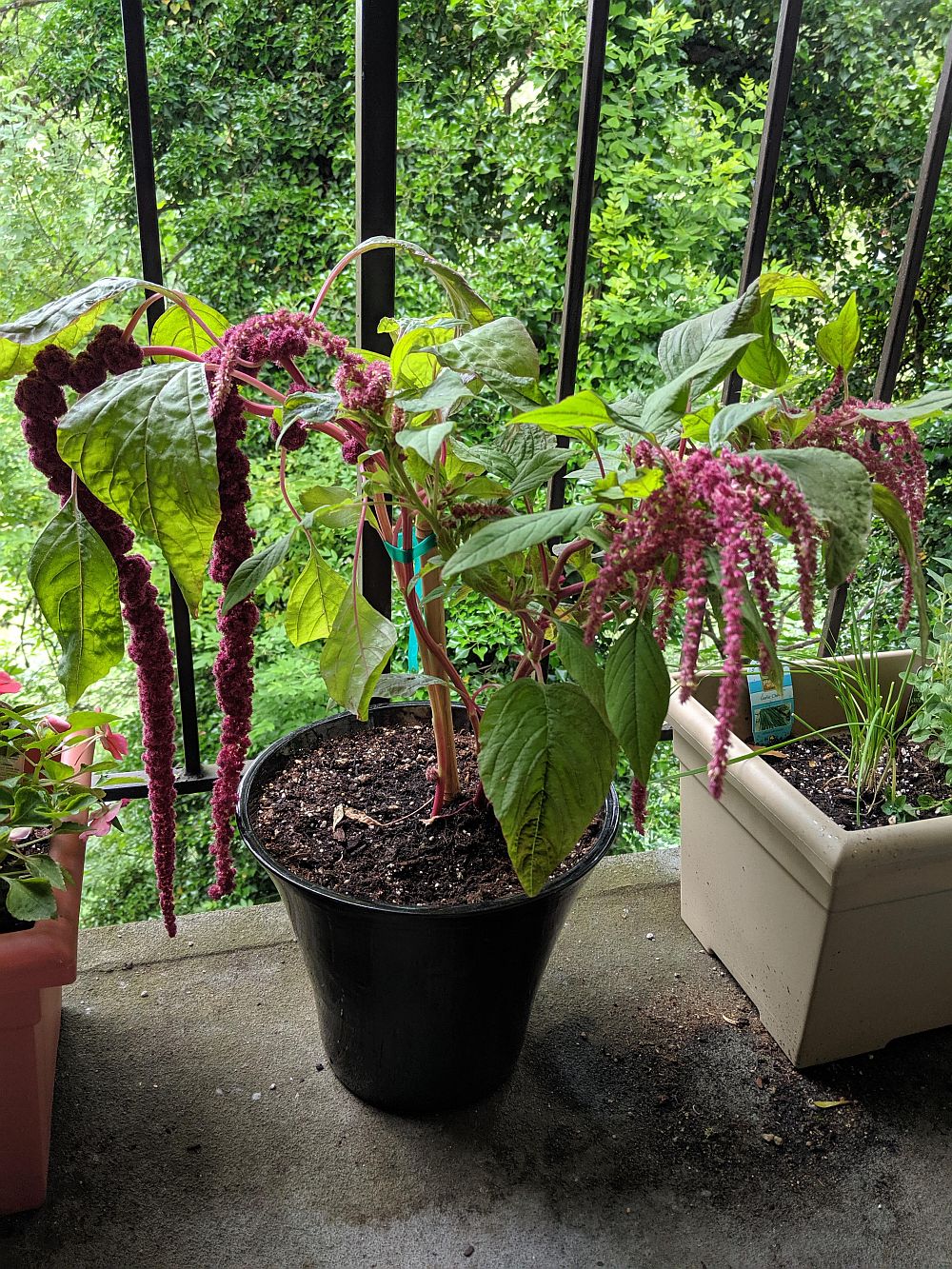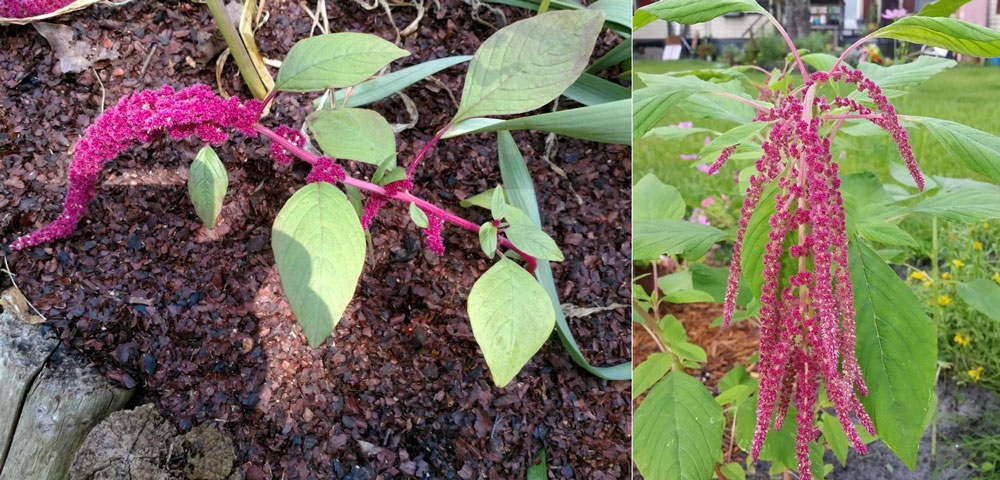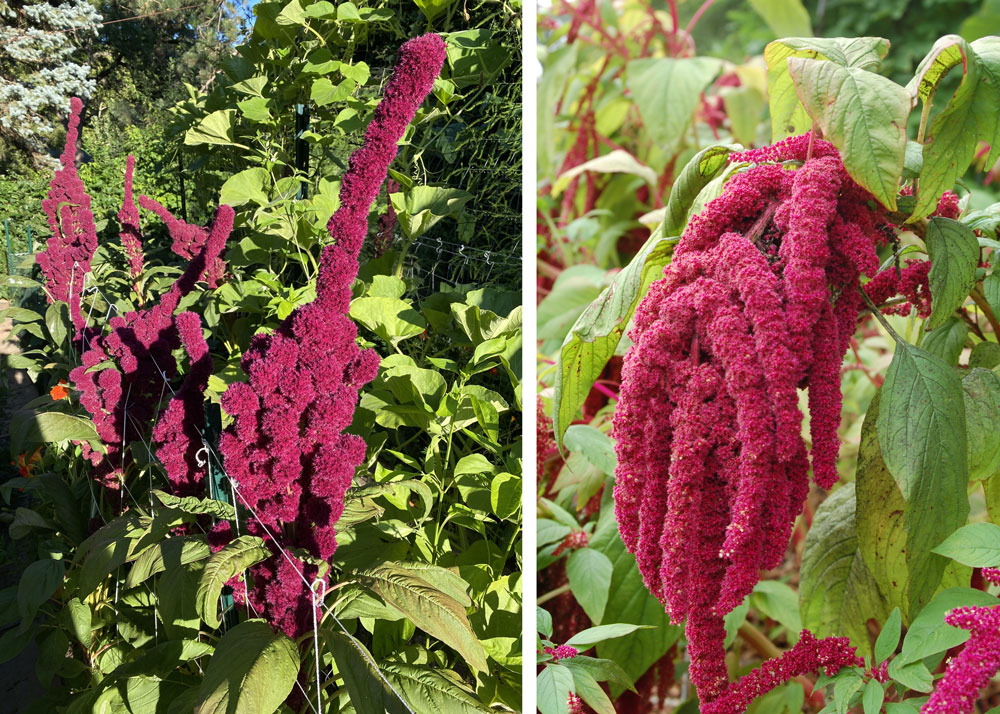Love Lies Bleeding Plants – How To Grow And Care For Amaranthus Caudatus
Not all flowers are named equal. Some are lucky enough to get a simple mono-syllabic name like the rose. Others go over the top with their melodramatic connotations and nineteenth-century romantic novels. Love lies bleeding is one of those less fortunate plants that got stuck with a name that doesn’t reflect its beauty or real value.
So if you look past the name and give this plant a good investigative look, you will be surprised how much value it brings to your garden and kitchen table at the same time. This is one of those plants that look good both as a potted plant and in the kitchen pot. So how do you grow the plant and how did it end up with a name like that? Read on to get all the nitty-gritty details.
What’s in a Name
It’s really hard to get a head start in life and invade gardens, as well as gardeners’ hearts, with a name like love lies bleeding. So we’ll use its scientific name since it’s a lot less jarring. Amaranthus caudatus is the scientific name and it reflects the beauty of the plant without making one’s skin crawl.
In ancient times, more specifically in the peak of the Aztec empire, amaranthus was the favorite flower used to carve and adorn statues of deities. One of those was Huitzilopochtli, the local war deity in the Aztec culture. His effigy was made of amaranthus mixed with honey. To say that the end result was as scary as it sounds is putting it mildly.
After the end of the Aztec empire, the Spanish conquerors banned the growing of amaranthus altogether due to its pagan past. The plant survived in the remote areas of Mexico not under Spanish rule where it was grown to make dessert. It has remained part of the Mexican cuisine to this day.
Amaranthus made it to the United States in the second half of the twentieth century. It soon found its rightful place in many gardens and cooking recipes. As we’ll see, amaranthus is more than an overdramatic name and bright colors.
Benefits and Uses of Love Lies Bleeding
From the early days, people have discovered that amaranthus was more than just a beautiful plant with pretty blooms and rich foliage. It’s rare to find a plant that’s gorgeous in every way and also edible. Not just one species, but all 60 species of amaranthus are edible both leaves and seeds. But these are not the only benefits and uses you get from this amazing species.
- Extracts from the plant are often used as performance-enhancing material for athletes that don’t get them in trouble with the law.
- The plant and all its parts are pet friendly. Neither dogs, cats, or children have a problem with it.
- The leaves and flowers are not toxic.
- The seeds of amaranthus are packed with complete proteins. They are better consumed whole.
- Known for its mild flavor, the seed tastes like sesame and can be used in egg roll recipes among others without all the oils.
- The leaves are very nutritious offering an abundance of folate, calcium, potassium, vitamins A and C, and manganese.
- Amaranthus is also rich with Omega-3 fatty acids that you get in fish and seafood.
- You can cook, sauté, stir-fry, or steam the leaves which taste a little like spinach.
- It’s the main ingredient in many recipes such as popped amaranthus, amaranthus breakfast porridge, Alegria, and amaranthus leaves in coconut milk.
Grow Love Lies Bleeding in Your Garden
As a native of Central America as well as other tropical parts of the world, amaranthus is a plant that loves to get its full share of sunlight. Rich soil is essential to its growth and prosperity, although that’s something you can always control using both organic material as well as chemical fertilizers.
Location
It usually takes the plant about 4 months of hot and dry weather to mature and start producing seeds. So if you don’t get plenty of sun except in the summer, you could start the plant indoors and wait until the last frost is over before you bring it to its permanent place in the garden.
The best location is one to the south or west of your garden. These spots usually get plenty of the sun unlike the north or the east that get in the shade quickly.
Space
You should plan the space and necessary area for the amaranthus before you plant it. Think in terms of height and width. On average the plant grows to anything between 2 to 5 feet. Although in the right conditions, it could hit 6 feet with ease.
Horizontally, the amaranthus needs around 3 feet of real estate in your garden. It branches out to one and a half to two and a half feet when fully grown.
Soil
The soil needs to be rich to satisfy the amaranthus need for nutrients. However, you can still grow in it in a variety of soil from the slightly sandy to the clay and dark. Just make sure the soil is well-drained and has a pH level between 6 to 7.5. Use lots of organic compost to get the plant to a good start when planting. Well-balanced liquid fertilizers can be administered throughout the plant’s life especially before flowering and immediately after the flowers fade.
Water
From the moment you plant the seeds until you watch the pollinated flowers fading to be replaced with seed-filled pods, you need to give the amaranthus its sufficient amounts for water. This need for water drops in times where growth is stable or before flowering. However, you should make sure the soil two-inches down is moist if not outright wet. Ideally, you should water it at least once a week unless it gets pretty warm and you worry about dehydration.
Love Lies Bleeding Care
As a plant that stays in the soil for anything between 4 to 6 months, if not longer, amaranthus is a little demanding in terms of care and maintenance. But seeing that you can use it as food and landscaping, this hard work is totally worth it.
Temperature and Light
As a tropical plant, you would think that hot temperatures better suit the plant than moderate to cold ones. And you’re right about that. Amaranthus thrives in hot temperatures between 70 and 85 degrees F. It can still tolerate temperatures as low as 45 degrees F, although that might impact the quality of the seeds and the flavors of the leaves. Anything under 40 degrees F will be detrimental to the life of the plant.
It needs plenty of sunlight, although, during the dog days of summer, it would appreciate some shade to protect it against dehydration. It has a USDA hardiness zone between 2 and 11.
Flowering
It’s easy to assume that whoever came up with this outlandish name must have stared for too long at the flowers of the amaranthus. The flowers are amazingly red and grow in clusters or long tassels. This explains the other name, Tassel Flower, that it’s known by in some regions.
The bloom season starts in July and goes on until mid-September. The flowers stay looking fresh and bright even when dried out. Each drooping tassel grows to about 2 feet long.
Pest and Diseases
With such delicious parts of the amaranthus serving in so many cuisines, other insects and bugs have the plant on their menu as well. The leaves in particular attract all kinds of bugs so you’ll need to keep an eye out for any infections.
The roots of amaranthus are susceptible to root rot in badly drained soil. Make sure to add mulch and organic matter to improve aeration. In excessively humid environments, powdery mildew can be a serious problem. You can either go with chemical pesticides or choose an organic solution such as neem oil which is more environmentally friendly and doesn’t pose toxicity risk.
How to Harvest Love Lies Bleeding
Since many parts of amaranthus are edible, you will need to harvest the whole plant not just gather the parts you need. The best time to harvest is in the fall before the first frost. Cut the plant at the base near the ground and hang it upside down to dry. Avoid shaking it or treating it roughly since it could lose the precious seeds.
When the stalks are fully dry, beat them against a bucket to collect the seeds. Separate the seeds from any plant debris from the stalks or dried out flowers. You could use a hairdryer to blow away the debris and keep the precious seeds.
Some people grow amaranthus for its beautiful blooms. Cut the flower tassel at the base and arrange it in a vase. It will stay fresh for up to 5 days. After it dries, it will maintain its deep and lively colors.



I raised 240 plants this year (2020)and gave most away. It is truly amazing how other folk’s plants have done, dependant on the quality of the soil/compost and whether fed or not. Mine have been given first class compost and have been well fed – so they exceed 3 feet. Other who put them in poor soil have plants in flower at only a very few inches.
So give your seedlings the best of everything!
I have a question – I don’t know if you monitor this space – I hope so!
I would like to try this – I have some seeds – but I am worried that it will propagate and spread all over my garden – I am told it is quite capable of doing that… so what is the best time to trim off the flowers before they get a chance to drop the seeds and the wind will take them everywhere? How do I know when they are ready – I’d rather cut them off a little early than wait until it’s too late… I will then keep the tassels for next year.
Thanks in advance
Hi Dani
For the flowers to develop seeds, they need to pollinate first and in this case, it’s the wind that pollinates them. However, since the flowers bloom from July to September and the seeds are ripe sometime from August to September, I’d say you have about four weeks, give or take, before the plants are ready to spread their seeds.
should I cut the plant right back for winter or just leave it?